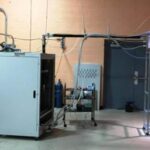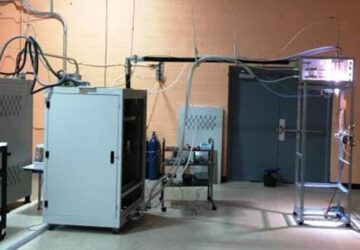When it comes to real-time, accurate color and appearance monitoring during production, Inline Spectrophotometers are the unsung heroes. These devices are increasingly becoming the go-to solution for manufacturers who simply can’t afford to get color wrong—whether it’s in paint, plastics, food, or textiles. Inline spectrophotometers are built to deliver consistent quality, eliminate rework, and reduce waste—while keeping production lines moving at full speed. If you’re not using one yet, this might be your nudge.
What Exactly is an Inline Spectrophotometer?
Let’s keep it simple. An inline spectrophotometer is a device mounted directly onto your production line that continuously measures the color or spectral data of products as they are being made. Unlike handheld or benchtop models that require stopping production or taking samples, inline systems are fully automated, non-contact, and lightning fast.
They track key parameters like Lab*, Delta E, reflectance, and more—right in the thick of manufacturing. In other words, you’re getting real-time insights without breaking the flow.
Why Inline Spectrophotometers Matter in Manufacturing
In many industries, color isn’t just cosmetic—it’s everything. Think of automotive paints, cosmetic packaging, food coloring, or branded textiles. A slight variation from the standard shade can lead to customer complaints, product recalls, or damaged brand trust.
Inline spectrophotometers give you:
- Real-time color control – No waiting, no guessing.
- Reduced scrap and rework – Catch mistakes before they become costly.
- Faster decision-making – Operators are empowered with immediate feedback.
- Documented consistency – You’ve got the data trail to prove it.
Where They’re Used (And Why It Works)
You’ll find inline spectrophotometers in industries where color accuracy is non-negotiable. A few top examples:
Paints and Coatings
In automotive or industrial paints, the slightest shade difference between batches can ruin the whole finish. Inline spectrophotometers ensure paint is consistently mixed and applied with zero variation.
Plastics
From packaging to consumer products, plastic components need to match color targets exactly—especially when products are molded in separate plants or over long runs.
Food and Beverage
Visual appeal in food products drives first impressions. From ketchup to coffee beans, inline systems help ensure each batch looks just right before it ever hits the shelf.
Textiles and Apparel
Inline spectrophotometers allow fabric manufacturers to monitor dyeing or printing processes in real-time, catching tone shifts before yards of material go to waste.
Key Benefits: It’s More Than Just Color
Inline spectrophotometers aren’t just for aesthetics—they’re about smarter, leaner operations:
- Automated alerts: If the system detects drift from target color values, it can automatically notify operators or even adjust formulations.
- Seamless data integration: Measurements can be logged and synced with your QA or ERP systems for full traceability.
- No downtime: Since there’s no need to pull samples, production never stops.
And here’s the best part: once set up, they operate silently in the background—doing their job, so you can focus on yours.
What to Look for When Choosing One
Not all inline spectrophotometers are created equal. If you’re in the market, here’s what matters:
- Measurement speed – Can it keep up with your production line?
- Accuracy and repeatability – Consistency is key, especially over long runs.
- Compatibility – Will it integrate smoothly with your existing software and machinery?
- Ease of calibration – Look for self-calibrating or low-maintenance models.
- Environmental resistance – Dust, heat, or vibrations? Make sure it’s built for your line.
Top players in the space include names like X-Rite, Konica Minolta, and HunterLab—all known for offering robust, industry-grade solutions.
Final Thoughts: Inline Color Control Isn’t a Luxury—It’s a Competitive Edge
Inline spectrophotometers are no longer just nice-to-haves. They’re essential tools for manufacturers who want to stay ahead of quality issues, save costs, and protect brand integrity. By catching color deviations in real-time, they eliminate rework and reduce waste—without slowing production down.
If you’re serious about scaling up without sacrificing quality, it’s time to take a closer look at inline spectrophotometers. They’re not just improving workflows—they’re redefining them.








